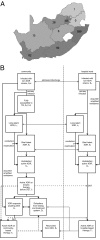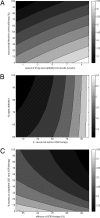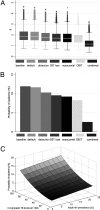Averting epidemics of extensively drug-resistant tuberculosis
- PMID: 19365076
- PMCID: PMC2678614
- DOI: 10.1073/pnas.0812472106
Averting epidemics of extensively drug-resistant tuberculosis
Abstract
Extensively drug-resistant tuberculosis (XDR TB) has been detected in most provinces of South Africa, particularly in the KwaZulu-Natal province where several hundred cases have been reported since 2004. We analyzed the transmission dynamics of XDR TB in the region using mathematical models, and observed that nosocomial transmission clusters of XDR TB may emerge into community-based epidemics under the public health conditions of many South African communities. The effective reproductive number of XDR TB in KwaZulu-Natal may be around 2. Intensified community-based case finding and therapy appears critical to curtailing transmission. In the setting of delayed disease presentation and high system demand, improved diagnostic approaches may need to be employed in community-based programs rather than exclusively at tertiary hospitals. Using branching process mathematics, we observed that early, community-based drug-susceptibility testing and effective XDR therapy could help curtail ongoing transmission and reduce the probability of XDR TB epidemics in neighboring territories.
Conflict of interest statement
The authors declare no conflict of interest.
Figures




References
-
- Centers for Disease Control and Prevention. Notice to readers: Revised definition of extensively drug-resistant tuberculosis. MMWR. 2006;55:11176.
-
- Moodley P, et al. Multi- and extensively drug resistant mycobacterium tuberculosis in South Africa. Int J Tuberc Lung Dis. 2007;11:S56.
-
- Government of South Africa. Tuberculosis Strategic Plan for South Africa, 2007–2011. Pretoria, South Africa: Ministry of Health; 2007.
-
- Andrews JR, et al. Exogenous reinfection as a cause of multidrug-resistant and extensively drug-resistant tuberculosis in rural South Africa. J Infect Dis. 2008;198:1582–1589. - PubMed
Publication types
MeSH terms
Grants and funding
LinkOut - more resources
Full Text Sources

